
Karen Louise Erdrich is an American author of novels, poetry, and children's books featuring Native American characters and settings. She is an enrolled member of the Turtle Mountain Band of Chippewa Indians, a federally recognized tribe of Ojibwe people.

"The Black Cat" is a short story by American writer Edgar Allan Poe. It was first published in the August 19, 1843, edition of The Saturday Evening Post. In the story, an unnamed narrator has a strong affection for pets until he perversely turns to abusing them. His favorite, a pet black cat, bites him one night and the narrator punishes it by cutting its eye out and then hanging it from a tree. The home burns down but one remaining wall shows a burned outline of a cat hanging from a noose. He soon finds another black cat, similar to the first except for a white mark on its chest, but he soon develops a hatred for it as well. He attempts to kill the cat with an axe but his wife stops him; instead, the narrator murders his wife. He conceals the body behind a brick wall in his basement. The police soon come and, after the narrator's tapping on the wall is met with a shrieking sound, they find not only the wife's corpse but also the black cat that had been accidentally walled in with the body and alerted them with its cry.

The Guns of Avalon is fantasy novel by American writer Roger Zelazny, the second book in the Chronicles of Amber series. The book continues straight from the previous volume, Nine Princes in Amber, although it includes a recapitulation.

Death on the Nile is a work of detective fiction by British writer Agatha Christie, published in the UK by the Collins Crime Club on 1 November 1937 and in the US by Dodd, Mead and Company the following year. The UK edition retailed at seven shillings and sixpence (7/6) and the US edition at $2.00.

The Métis are an Indigenous people whose historical homelands includes Canada's three Prairie Provinces, as well as parts of British Columbia, the Northwest Territories, Northwest Ontario and the Northern United States. They have a shared history and culture, deriving from specific mixed European and Indigenous ancestry, which became distinct through ethnogenesis by the mid-18th century, during the early years of the North American fur trade.

James Phillip Welch Jr., who grew up within the Blackfeet and A'aninin cultures of his parents, was a Native American novelist and poet, considered a founding author of the Native American Renaissance. His novel Fools Crow (1986) received several national literary awards, and his debut novel Winter in the Blood (1974) was adapted as a film by the same name, released in 2013.

Love Medicine is Louise Erdrich's debut novel, first published in 1984. Erdrich revised and expanded the novel in subsequent 1993 and 2009 editions. The book follows the lives of five interconnected Ojibwe families living on fictional reservations in Minnesota and North Dakota. The collection of stories in the book spans six decades from the 1930s to the 1980s. Love Medicine garnered critical praise and won numerous awards, including the 1984 National Book Critics Circle Award.

Tracks is a novel by Louise Erdrich, published in 1988. It is the third in a tetralogy of novels beginning with Love Medicine that explores the interrelated lives of four Anishinaabe families living on an Indian reservation near the fictional town of Argus, North Dakota. Within the saga, Tracks is earliest chronologically, providing the back-story of several characters such as Lulu Lamartine and Marie Kashpaw who become prominent in the other novels. As in many of her other novels, Erdrich employs the use of multiple first-person narratives to relate the events of the plot, alternating between Nanapush, a tribal patriarch, and Pauline, a young girl of mixed heritage.

Winter in the Blood is the debut novel of James Welch. It was published by Harper and Row's Native American Publishing Program in 1974. Set on the Fort Belknap Indian Reservation in north-central Montana during the late 1960s, Winter in the Blood follows a nameless Blackfeet and Gros Ventre (A'aninin) man's episodic journey to piece together his fragmented identity. Welch received praise from such luminaries as Pulitzer Prize-winning Ojibwe author Louise Erdrich, celebrated American novelist Reynolds Price, and Coeur d'Alene author Sherman Alexie. Alexie later produced the film adaptation of the novel, which was released in 2012.

David Treuer (Ojibwe) is an American writer, critic and academic. As of 2019, he had published seven books; his work published in 2006 was noted as among the best of the year by several major publications. He published a book of essays in 2006 on Native American fiction that stirred controversy by criticizing major writers of the tradition and concluding, "Native American fiction does not exist."
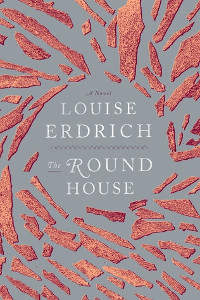
The Round House is a novel by the American writer Louise Erdrich first published on October 2, 2012 by HarperCollins. The Round House is Erdrich's 14th novel and is part of her "justice trilogy" of novels, which includes The Plague of Doves released in 2008 and LaRose in 2016. The Round House follows the story of Joe Coutts, a 13-year-old boy who is frustrated with the poor investigation into his mother's gruesome attack and sets out to find his mother's attacker with the help of his best friends, Cappy, Angus, and Zack. Like most of Erdrich's other works, The Round House is set on an Ojibwe reservation in North Dakota.
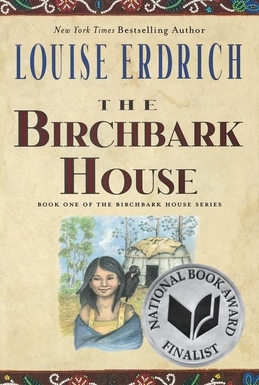
The Birchbark House is a 1999 indigenous juvenile realistic fiction novel by Louise Erdrich, and is the first book in a five book series known as The Birchbark series. The story follows the life of Omakayas and her Ojibwe community beginning in 1847 near present-day Lake Superior. The Birchbark House has received positive reviews and was a 1999 National Book Award Finalist for young people's fiction.
The Game of Silence is a 2005 novel by Louise Erdrich. It is the second novel in "The Birchbark" series that began with The Birchbark House. The two novels both feature the family of the Ojibwe girl Omakayas.

LaRose is a novel by the Ojibwe author Louise Erdrich, published in 2016 by HarperCollins. The book received positive reviews from multiple publications, including The New York Times, The Kansas City Star, Winnipeg Free Press, The Philadelphia Inquirer, The Washington Post, The A.V. Club, The Sydney Morning Herald, USA Today, and The Chronicle Herald. It won the 2016 National Book Critics Circle Award in fiction. The novel features the same setting as Erdrich's 2012 novel The Round House.
List of works by or about American author Louise Erdrich.
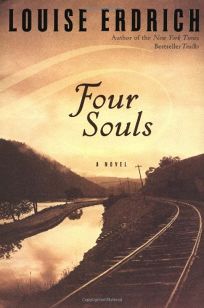
Four Souls (2004) is an entry in the Love Medicine series by Chippewa (Ojibwe) author Louise Erdrich. It was written after The Master Butcher’s Singing Club (2003) and before The Painted Drum (2005); however, the events of Four Souls take place after Tracks (1988). Four Souls follows Fleur Pillager, an Ojibwe woman, in her quest for revenge against the white man who stole her ancestral land. Fleur appears in many books in the series, and this novel takes place directly after her departure from the Little No Horse reservation at the end of Tracks. The novel is narrated by three characters, Nanapush, Polly Elizabeth, and Margaret, with Nanapush narrating all of the odd numbered chapters and Polly Elizabeth taking all but the last two even numbered chapters.
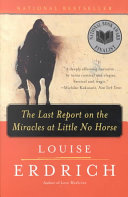
The Last Report on the Miracles at Little No Horse, first published in 2001, is a novel by author Louise Erdrich. The novel tells the story of Agnes DeWitt as Father Damien, the reverend who becomes part of the reservation community. Erdrich's narration alternates between Agnes’ early 20th-century memories and a series of interviews set in 1996 wherein another priest questions Damien about the possible canonization of Pauline Puyat.
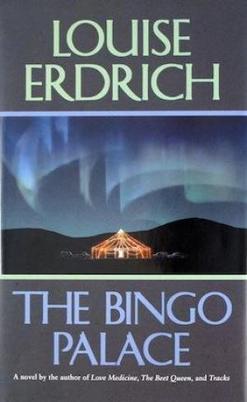
The Bingo Palace is a novel written by Louise Erdrich published in 1994, with three chapters appearing in the Georgia Review, The New Yorker, and Granta. It is the fourth novel in Erdrich's Love Medicine series, and it follows Lipsha Morrissey as he is summoned home by his grandmother Lulu Lamartine. He returns home to the reservation for the first time in years and finds himself in rapture of a woman named Shawnee Ray. The novel discusses themes of family and identity from an Anishinaabe perspective.
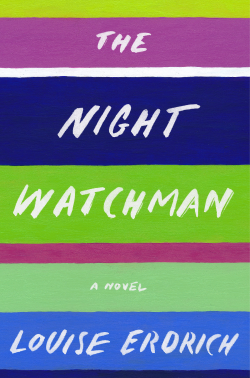
The Night Watchman is a novel by Louise Erdrich first published on March 3, 2020, by HarperCollins. The novel is set in the 1950s. This is Erdrich's sixth standalone novel following Future Home of the Living God. The novel was inspired by the life of Erdrich's grandfather who motivated and inspired other members of the Turtle Mountain Reservation to resist the Indian termination policies of the 1940s-1960s. The Night Watchman is the first novel that Erdrich has written that is set on the Turtle Mountain Reservation.

Future Home of the Living God is a dystopian novel and work of speculative fiction by Louise Erdrich first published on November 14, 2017, by HarperCollins. The novel follows 26-year-old Cedar Hawk Songmaker, an Ojibwe woman raised by white parents, who visits her birth mother's reservation just as the United States becomes increasingly totalitarian following a reversal of evolution.


















